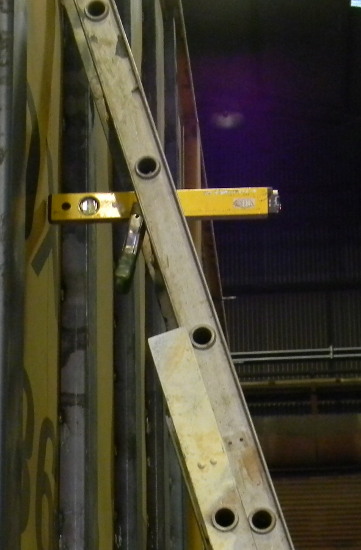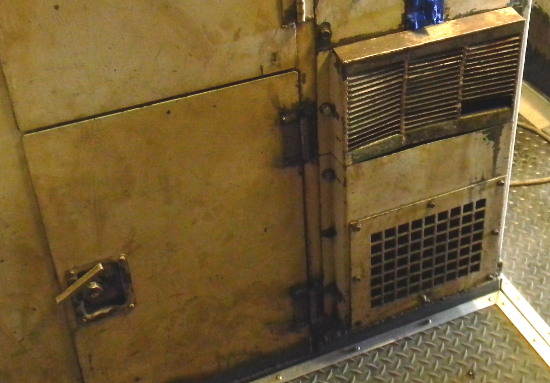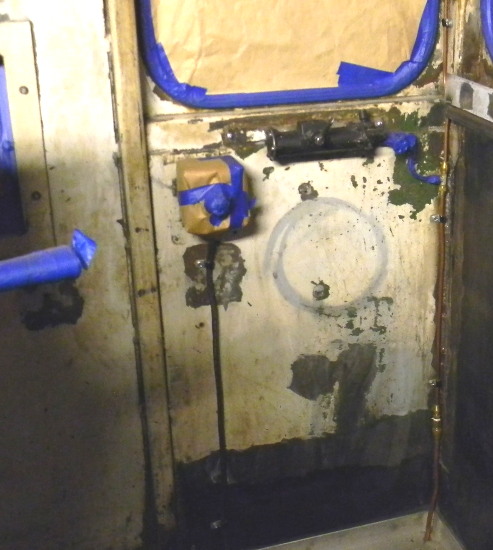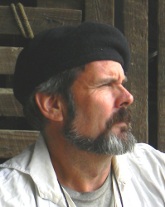You are hereBlack River Switcher 2
Black River Switcher 2
Even though I'm not convinced that primer is always necessary on bare steel, I used it this time, for the sake of convenience. I needed something that would dry fast, and keep trhe paint from sinking into the filler. I used a “Tank and industrial primer” by Devoe brand. This is a product I quite pleased with. Under certain circumstances, I can get it to do what more expensive primers would do, but it's in the alkyd price range. This time though, I should have been more careful when applying it, there were some places where it went on “dry” like the old sandable lacquer primer. I wasn't too concerned, knowing that a little texture in the finish can hide the great waviness of this old body
After priming, I applied white Imron, and let it dry. At this point, I've gone to night shift, to be sure the rest of the crew is gone. Here's a picture of the locomotive with the aluminum color paint on the trucks, and the white applied where letters and stripes will go. An interesting note is that while talking to the owner of the switcher, I casually alternated between the terms “aluminum”, and “silver”. The specs called for aluminum, and he pointed out that they have had better durability from the color “aluminum”.
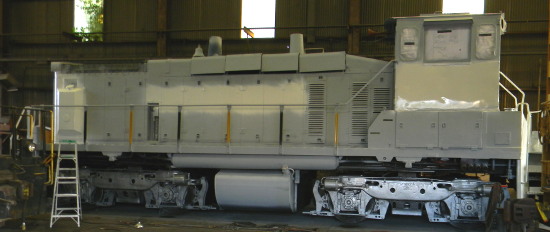
In the next picture, you can see where Ive got the lights out, and I'm using a laser level to arrange lines on the pilot. This is a budget model level with a built in laser pointer at one end. It has a sliding lens cover, that when moved over the laser dot, it becomes a red line. Two lines actually, which intersect at a right angle. I have used this tool with great success when painting art work of sorts on a building. The laser line isn't affected by irregularities in the surface. I thought it would be perfect here, but in the end, it actually cost me too many hours. Except for one application, I would have been much better using the old methods I used for years as a sign painter. That one situation is to align the lower set of stripes with the upper set of stripes on the cab end. There are stripes on the cab, and down on the pilot, but none on the sandboxes in between. It might not matter at all, having them aligned for continuity; the gap is about two feet tall, and the mind might not comprehend the difference. But just to do a nice job, being that I had the tool with me, I used it in that way. What I did was to make the bottom set of stripes, then, using the laser, carry the top stripe line up to the cab, and begin measuring the stripes up there. It's not a lot of continuity at work here, if you look at the picture of the finish paint job, the little white triangle at the bottom of the cab door is the same line as the top strip on the pilot. In the picture, you can see the red laser lines, as well as blue painter's tape that I laid next to the laser line. The problem was that the slightest move of the laser throws the line way off, it's very hard to adjust. I do have a tripod that the laser will fit on, but that would only work for the lower sections; it's not tall enough to get a true flat trajectory on the cab and sandbox at the front of the locomotive. When I turned the lights back on, the first triangle above the coupler was off center; and efforts to correct it were a lesson in the law of unintended consequences.
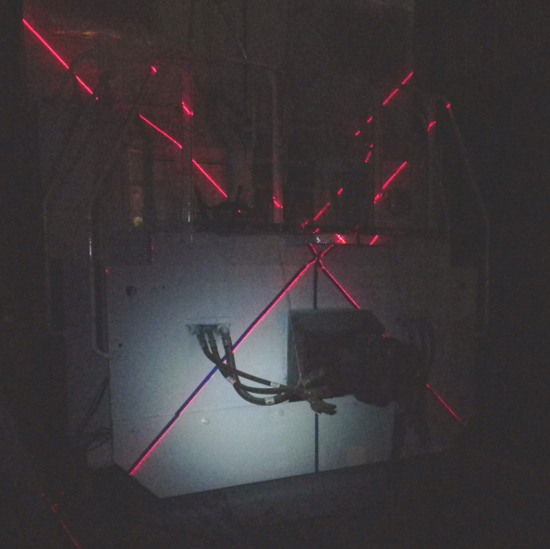
In the next picture, I've got the laser level resting on the step of an extension ladder. I did this to get a single line laying across the varying angles of the sandbox at the front. This was a complete waste of time. There is a spring clamp on the level, to act as a counter weight. Also included are a couple pictures from the inside of the cab, prior to painting; this was part of the job.
